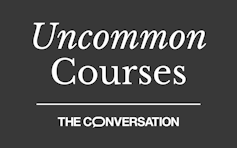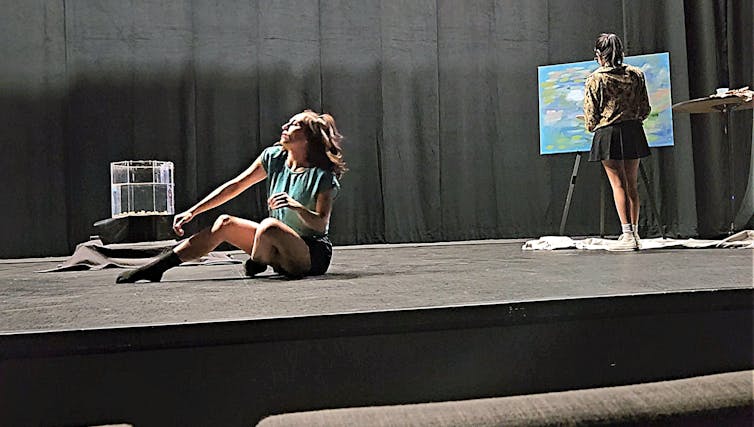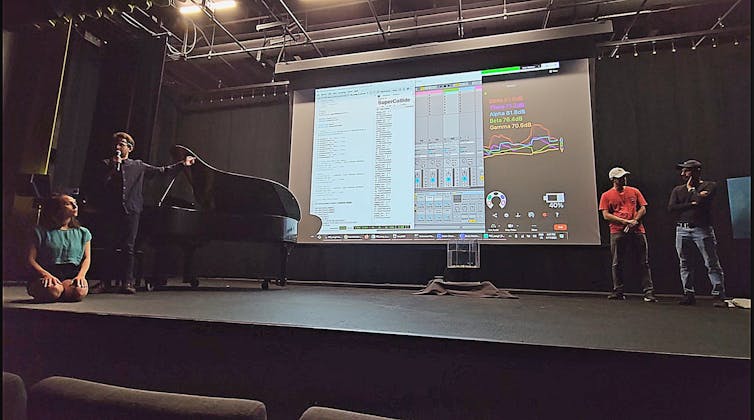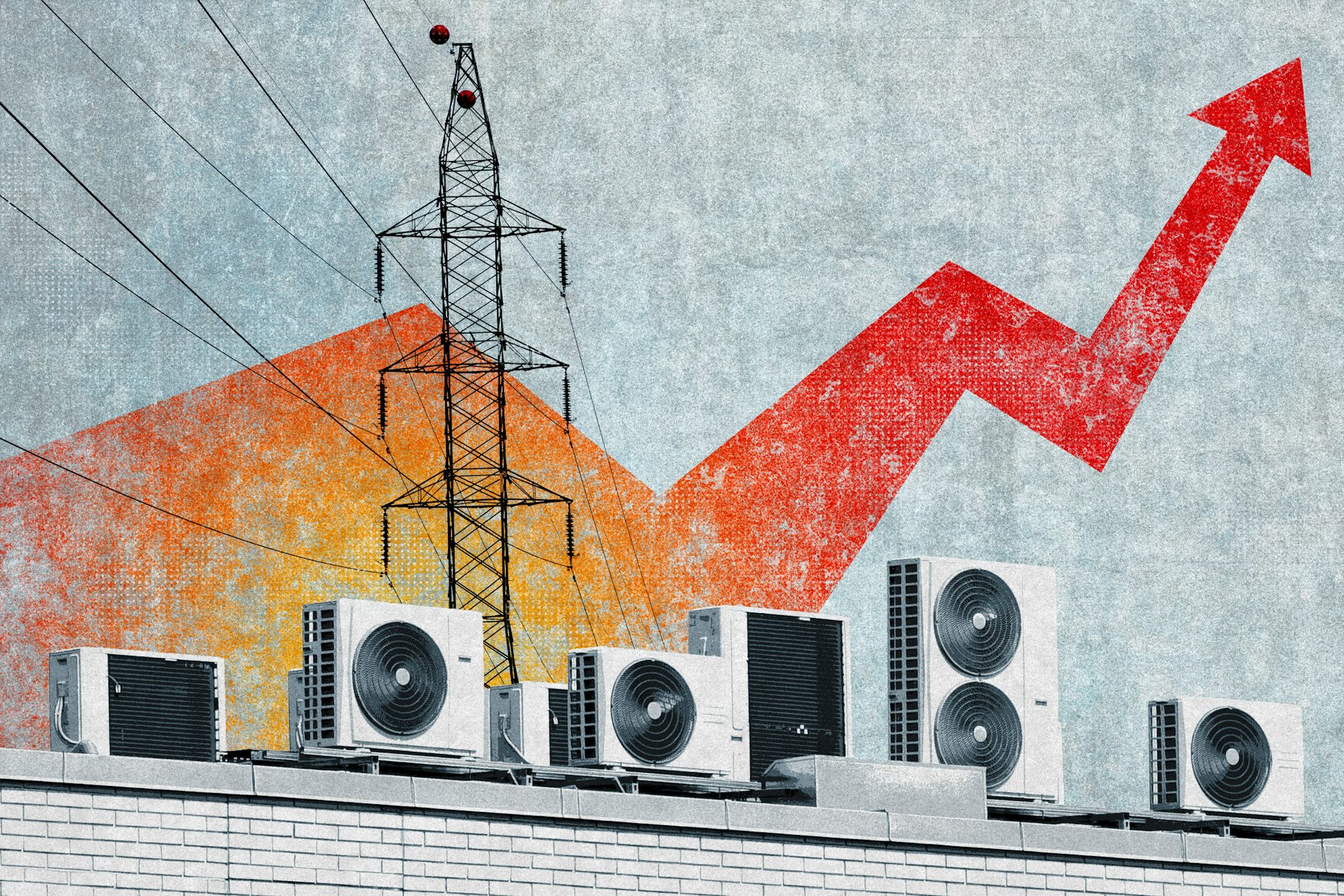This engineering course has students use their brainwaves to create performing art
Art and science combine in this engineering course to let students turn their brainwaves into creative works.

Uncommon Courses is an occasional series from The Conversation U.S. highlighting unconventional approaches to teaching.
Title of course:
“Arts and Geometry”
What prompted the idea for the course?
After a serious injury in 2016, I started drawing and painting during my recovery as a form of self-taught art therapy. I found the experience transformative. During my recovery, I rediscovered Pablo Picasso’s artwork and the geometry of his cubism, which inspired my early paintings.
As making art became part of my life, a desire grew to share this transformative experience with my engineering students. I wanted them to learn how to see science and engineering from a broader perspective – as an artist.
This led to the idea for, and development of, a course on arts and geometry in collaboration with professional artists of the Atlanta community. The play “Picasso at the Lapin Agile,” where comedian Steve Martin imagined a conversation in a Parisian cafe between Picasso and Albert Einstein, helped inspire the course. So did a book on history and philosophy of science professor Arthur Miller, “Einstein, Picasso: Space, Time and the Beauty That Causes Havoc.”
What does the course explore?
The course introduces engineering students to the geometry of manifolds – that is, cylinders, spheres or hyperboloids, and more complex surfaces, like a crumpled piece of paper or a rippled kale leaf. It then looks at how these concepts influenced modern arts and sciences: Picasso’s cubism and Einstein’s relativity. Cubism combines many angles to create a new way of seeing things, whereas Einstein’s theory changes how we think about time, which isn’t separate from the space around us – they are intertwined.
The course is integrated with weekly art labs taught over the years by Atlanta professional artists Emily Vickers, Rachel Grant, Anna Doll and Jerushia Graham, and with the support of music technologist Mike Winters. The artists teach students the fundamentals of several art mediums: pencil and charcoal drawing, printmaking, oil painting and sculptures.
We also teach students how to create performing art using their brainwaves. Brainwaves are produced when we are engaged in any activity. They can be measured by electroencephalography – or EEG – headsets.
Students learn to create auditory or dynamic visual representations of our mind activity when we think, reason, create, dance or relax doing nothing. For example, brainwaves produced by a dancer can be transformed into musical sounds, an auditory representation of the dancer’s movements. Similarly, the brainwaves of an artist making a painting, or those of a mathematician deriving an equation, can be transformed into music that mirrors the act of creating art or math.
The same brainwaves can power on or off a set of pumps that produce water jets in a tank, a system designed by professor Chris Lai and students Muhammad Mustafa and Alexander Zimmer. These jets interact among themselves to produce a disordered turbulent flow in the water tank. The shape and motion of vortexes generated by turbulence are a dynamic visualization of the human mind’s activity.

Why is this course relevant now?
Civil engineering can be explained and taught using the physics and mathematics of Isaac Newton and Gottfried Leibniz, from the 17th century: the concepts of derivatives and force being proportional to acceleration.
In our fast-changing world, there are exciting discoveries happening in science and technology, like in the understanding of the universe, artificial intelligence and quantum computing.
To prepare for the challenges posed by these recent discoveries, engineering students should be familiar with special mathematical tools developed by 20th-century geniuses such as Elie Cartan and Einstein. Such tools empower students to gain insights such as uncovering hidden geometric structures of complex physical systems or of large amounts of data. Normally, engineering classes don’t teach these topics.
The course also involves the participation of Colombian university students interested in arts for the RobotArts Initiative. Such an international exchange seeks to increase the number of Latino engineering students with skills in the arts, engineering and robotics. Besides taking my course, the students from Colombia also take a course on robotics.
What’s a critical lesson from the course?
Students realize the mental health benefits of practicing arts. They feel more self-confident and have more self-esteem because they have created something.
Performing art live empowers students’ self-expression. By not relying on memorization, these performances stimulate spontaneous creativity, improvisation and free thinking.

What materials does the course feature?
• “Spacetime and Geometry: An Introduction to General Relativity,” by Sean M. Carroll, Cambridge University Press, 2019 – a textbook that covers the foundations of the general relativity and mathematical formalism.
• “Einstein, Picasso: Space, Time, and the Beauty That Causes Havoc_ by Arthur J. Miller, Perseus Books Group, 2001 – a biography of Albert Einstein and Pablo Picasso.
• EEG headsets to acquire brainwaves and SuperCollider software to synthesize them into music.
What will the course prepare students to do?
The course will prepare students to think like an artist, using abstraction, imagination and fluid thinking. They will tackle with confidence the new engineering quests and challenges of the 21st century. The challenges encompass sustainable urban and ocean infrastructure design for extreme weather, global warming mitigation, clean water and energy, quantum computing, cybersecurity and ethical use of AI.
Francesco Fedele does not work for, consult, own shares in or receive funding from any company or organization that would benefit from this article, and has disclosed no relevant affiliations beyond their academic appointment.
Read These Next
The US already faces a health care workforce shortage – immigration policy could make it worse
About 1 in 4 doctors practicing in the US were born abroad.
Unpaid caregiving work can feel small and personal, but that doesn’t take away its ethical value
Debating whether to step back from a career to take on caregiving responsibilities can be a tough decision…
Rising electricity prices and an aging grid challenge the nation as data centers demand more power
Energy projects are expensive and take a long time to build. Where to build them is often also a difficult,…





